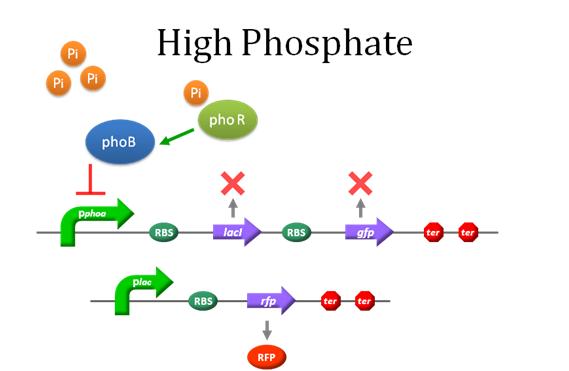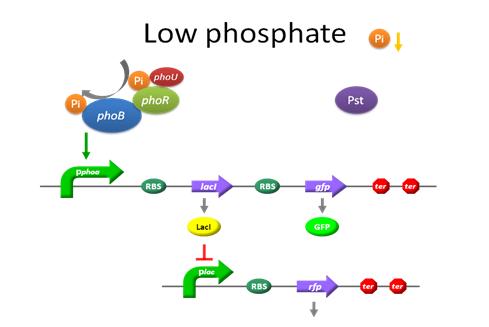Team:UAB-Barcelona/Modeling2
From 2009.igem.org
(New page: {{Template:UAB-Barcelona2}}) |
|||
| Line 1: | Line 1: | ||
{{Template:UAB-Barcelona2}} | {{Template:UAB-Barcelona2}} | ||
| + | |||
| + | '''PHOSPHATE BIOSENSOR MODEL''' | ||
| + | |||
| + | ='''INTRODUCTION'''= | ||
| + | |||
| + | {|class="wikitable" border="0" cellpadding="10" cellspacing="1" style="padding: 0; background-color:black; border: 1px solid black; text-align:justify; margin:5px -5px 5px -5px" | ||
| + | !width="30%"; valign="top" style="background:#ECC850; color:black"| | ||
| + | |||
| + | A mathematical model for the detection of phosphate by a recombinant Escherichia Coli is proposed. The model includes phosphate transport to the cell, detection of the phosphate concentration at the cell surface, and the signal transduction cascade ultimately leading to the induction of various Pho-controlled genes. Our model consist of a system of twenty nonlinear ordinary differential equations describing the temporal evolution of the key variables involved in the regulation of the pathway mentioned before. | ||
| + | |||
| + | |||
| + | To understand better how the biosensor works let’s see the two following figures. The first one shows the behavior of the system in front of a high phosphate concentration. As we can see PhoB (non-active) repress the phoa promoter blocking in this way the transcription of lacI and gfp. This situation leads to the activation of the lac promoter, which is constitutive, synthesizing RFP as an output. | ||
| + | |||
| + | |||
| + | On the other hand when the concentration of phosphate is low the activation complex PhoBA is formed. That specie activates the phoa promoter, leading to the production of lacI and GFP proteins. At the same time the increase on lacI concentration repress the lac promoter stopping the possible synthesis of RFP. In this case the output would be GFP. | ||
| + | |||
| + | |- | ||
| + | |} | ||
| + | |||
| + | [[Image:high_phosphate.jpg|center|frame|FIGURE 1]] | ||
| + | |||
| + | [[Image:low_phosphate.jpg|center|frame|FIGURE 2]] | ||
Revision as of 01:45, 22 October 2009
PHOSPHATE BIOSENSOR MODEL
INTRODUCTION
|
A mathematical model for the detection of phosphate by a recombinant Escherichia Coli is proposed. The model includes phosphate transport to the cell, detection of the phosphate concentration at the cell surface, and the signal transduction cascade ultimately leading to the induction of various Pho-controlled genes. Our model consist of a system of twenty nonlinear ordinary differential equations describing the temporal evolution of the key variables involved in the regulation of the pathway mentioned before.
|
|---|
 "
"


